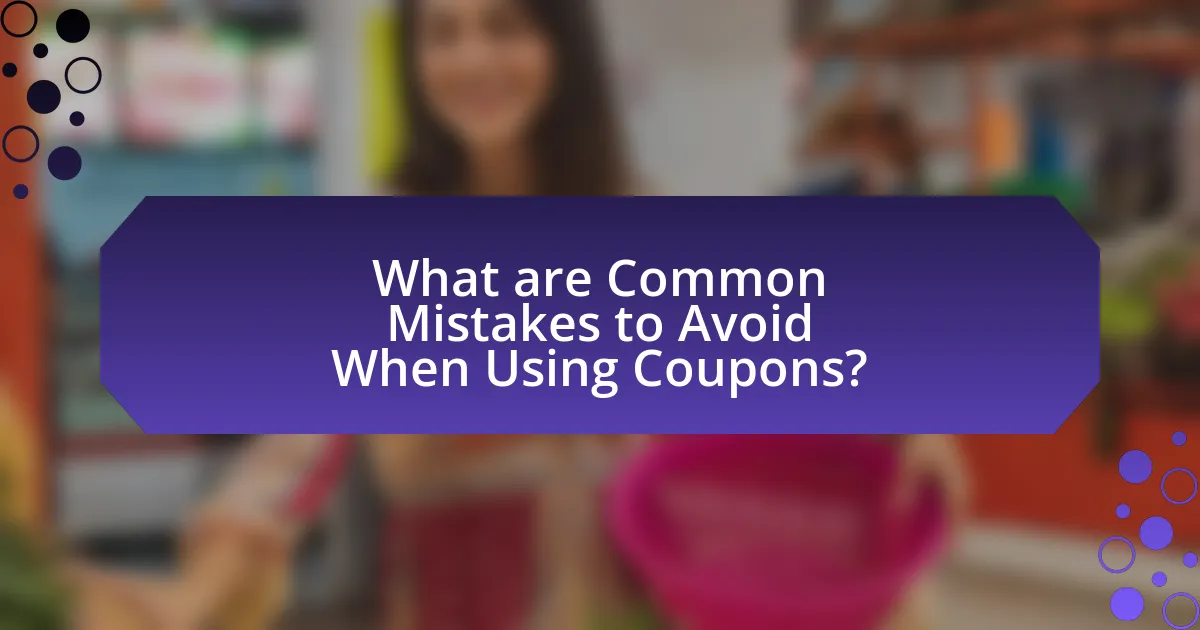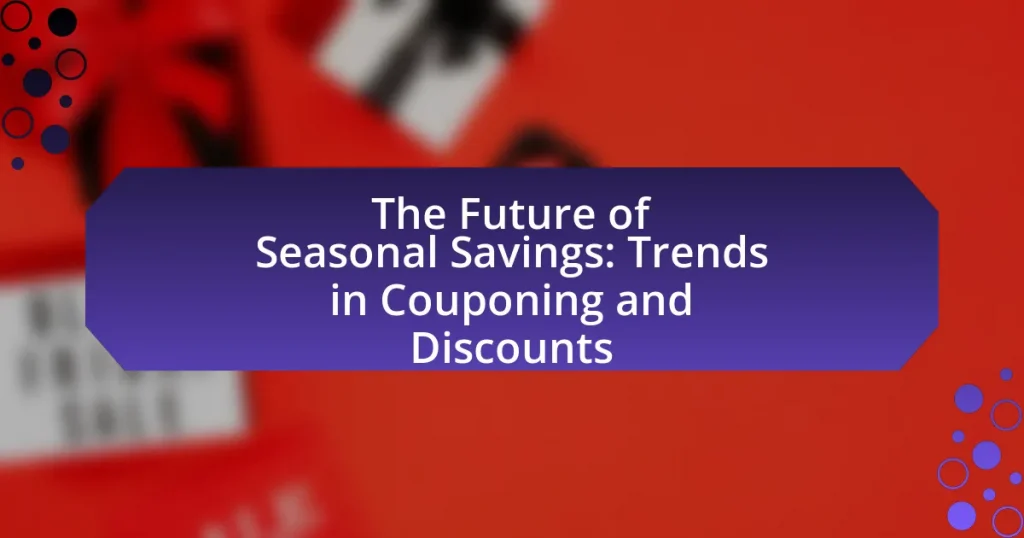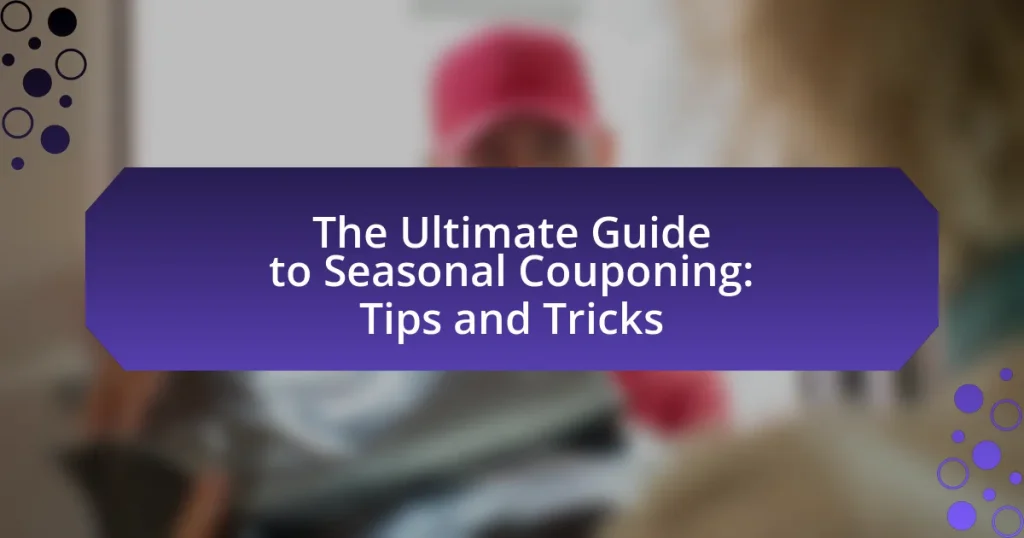Summer sales are promotional events that take place during the warmer months, offering substantial discounts on a variety of products and services. These sales are crucial for retailers to clear seasonal inventory and attract customers during slower sales periods, with discounts often ranging from 20% to 50%. The article explores the differences between summer sales and other seasonal promotions, factors influencing their timing, and the types of products typically discounted. Additionally, it provides strategies for consumers to find the best coupon deals, maximize savings, and avoid common pitfalls when using coupons during these sales events.

What are Summer Sales and Why are They Important?
Summer sales are promotional events that occur during the summer months, offering significant discounts on various products and services. These sales are important because they help retailers clear out seasonal inventory, attract customers during a typically slower sales period, and provide consumers with opportunities to purchase items at reduced prices. For example, in 2022, U.S. retailers saw a 20% increase in sales during summer sales events compared to the previous year, highlighting their effectiveness in driving consumer spending.
How do Summer Sales differ from other seasonal sales?
Summer sales differ from other seasonal sales primarily in their focus on clearance of warm-weather inventory and the promotion of summer-related products. Retailers often use summer sales to reduce stock from spring and early summer collections, offering significant discounts on clothing, outdoor gear, and travel-related items. For instance, a report from the National Retail Federation indicates that summer sales can see discounts ranging from 20% to 50%, which is often higher than discounts seen during winter holiday sales. This seasonal strategy aims to attract consumers looking for deals on summer essentials, making it distinct from other sales that may focus on holiday themes or back-to-school items.
What factors influence the timing of Summer Sales?
The timing of Summer Sales is influenced by several key factors, including seasonal demand, retail strategies, and economic conditions. Seasonal demand drives retailers to align sales with consumer behavior, as shoppers typically seek discounts during warmer months for summer-related products. Retail strategies, such as clearance of spring inventory and preparation for fall merchandise, also dictate when sales occur. Additionally, economic conditions, including consumer spending power and inflation rates, can affect the timing, as retailers may adjust their sales schedules to respond to market trends and consumer confidence.
Why do retailers offer discounts during Summer Sales?
Retailers offer discounts during Summer Sales primarily to boost sales volume and clear out seasonal inventory. By providing discounts, retailers attract customers who are looking for deals, thereby increasing foot traffic and online visits. This strategy is particularly effective during summer when consumer spending may shift towards vacations and outdoor activities, leading to a potential decline in retail sales. According to the National Retail Federation, summer sales events can significantly enhance revenue, with many retailers reporting a notable increase in sales during promotional periods.
What types of products are typically discounted during Summer Sales?
Summer sales typically discount seasonal items such as clothing, outdoor furniture, and home appliances. Retailers aim to clear inventory to make room for fall merchandise, leading to significant price reductions. For example, clothing retailers often offer discounts of 30% to 70% on summer apparel, while outdoor furniture can see markdowns of 20% to 50%. Additionally, home appliance sales may feature promotions as manufacturers release new models in the fall, resulting in discounts of 10% to 40% on existing stock.
Which categories see the biggest discounts?
Categories that see the biggest discounts during summer sales typically include apparel, electronics, and home goods. Apparel often experiences significant markdowns as retailers clear out seasonal inventory, with discounts averaging around 30-70%. Electronics, particularly older models, can see reductions of 20-50% as new models are introduced. Home goods, including furniture and decor, also frequently offer discounts of 25-60% during summer clearance events. These trends are supported by historical sales data from previous summer seasons, indicating consistent patterns in discounting across these categories.
How can consumers identify trending products during Summer Sales?
Consumers can identify trending products during Summer Sales by monitoring social media platforms, online marketplaces, and retail websites for popular items and customer reviews. Social media trends often highlight products gaining traction, while online marketplaces like Amazon and eBay showcase best-selling items in real-time. Additionally, retailers frequently feature trending products on their homepages or in promotional emails, providing insights into what is currently popular among shoppers. According to a report by Statista, 79% of consumers use social media to discover new products, reinforcing the importance of these platforms in identifying trends.

How to Find the Best Coupon Deals During Summer Sales?
To find the best coupon deals during summer sales, utilize online coupon websites and retailer newsletters. Websites like RetailMeNot and Coupons.com aggregate discounts and promotional codes, making it easy to compare offers. Additionally, subscribing to newsletters from your favorite retailers often provides exclusive coupons and early access to sales. According to a 2022 study by the National Retail Federation, 76% of consumers reported using coupons during seasonal sales, highlighting their effectiveness in maximizing savings.
What are the most effective strategies for finding coupons?
The most effective strategies for finding coupons include utilizing coupon websites, subscribing to retailer newsletters, and following brands on social media. Coupon websites like RetailMeNot and Coupons.com aggregate various discounts and promotional codes, making it easy to find deals in one place. Subscribing to newsletters from your favorite retailers often provides exclusive coupons directly to your inbox, sometimes even before they are publicly available. Additionally, brands frequently share special promotions and coupon codes on their social media platforms, encouraging followers to engage with their content. These methods are validated by the fact that many consumers report significant savings through these channels, with studies indicating that coupon users can save an average of 20% on their purchases.
How can online platforms help in locating coupon deals?
Online platforms assist in locating coupon deals by aggregating offers from various retailers, allowing users to search and compare discounts easily. Websites and apps like RetailMeNot and Honey compile coupon codes and promotional deals, providing users with a centralized resource to find savings. According to a 2021 survey by CouponCabin, 90% of consumers reported using online coupons to save money, highlighting the effectiveness of these platforms in facilitating access to discounts.
What role do social media and newsletters play in coupon discovery?
Social media and newsletters are crucial for coupon discovery as they provide real-time updates and exclusive offers directly to consumers. Platforms like Facebook, Instagram, and Twitter allow brands to share promotional content, engage with followers, and create buzz around sales events, leading to increased visibility of coupons. Additionally, newsletters often feature curated deals and personalized recommendations, ensuring subscribers receive tailored information that aligns with their shopping preferences. According to a 2022 survey by Statista, 49% of consumers reported discovering coupons through social media, highlighting its effectiveness as a channel for coupon dissemination.
How can consumers maximize their savings with coupons?
Consumers can maximize their savings with coupons by strategically planning their purchases around sales events and using multiple coupons in conjunction. By aligning coupon usage with seasonal sales, such as summer sales, consumers can take advantage of deeper discounts. For instance, a study by the National Retail Federation found that 68% of consumers use coupons during sales events, leading to an average savings of 20% on their total purchase. Additionally, consumers can stack manufacturer coupons with store coupons to increase their savings further, as many retailers allow this practice. This approach not only enhances the value of each coupon but also encourages consumers to buy items they need at a lower cost.
What are stacking coupons and how do they work?
Stacking coupons are promotional offers that allow consumers to use multiple coupons on a single purchase, maximizing savings. This practice typically involves combining a manufacturer’s coupon, a store coupon, and any applicable cashback offers or rewards points. For example, if a store offers a 20% off coupon and a manufacturer provides a $5 off coupon for the same product, a shopper can apply both discounts at checkout, resulting in greater overall savings. The effectiveness of stacking coupons is supported by retail strategies that encourage customer loyalty and increase sales volume, as evidenced by studies showing that consumers who use multiple discounts tend to spend more in stores.
How can timing affect the effectiveness of coupon usage?
Timing significantly affects the effectiveness of coupon usage by influencing consumer behavior and retailer strategies. For instance, coupons released during peak shopping seasons, such as summer sales, tend to attract more customers, as shoppers are actively seeking deals. Research indicates that 60% of consumers are more likely to use coupons during promotional events, which enhances their perceived value. Additionally, the timing of coupon expiration can create urgency, prompting quicker purchasing decisions. A study by the Journal of Marketing Research found that limited-time offers can increase sales by up to 20% compared to standard promotions. Thus, aligning coupon distribution with consumer shopping patterns maximizes their effectiveness.

What are Common Mistakes to Avoid When Using Coupons?
Common mistakes to avoid when using coupons include failing to read the fine print, which can lead to unexpected exclusions or expiration dates. Many consumers overlook the specific terms and conditions associated with each coupon, resulting in disappointment at checkout. Additionally, not comparing prices before applying a coupon can lead to missing out on better deals; a study by the National Retail Federation found that 66% of shoppers do not check prices before using coupons. Another mistake is using expired coupons, which can waste time and effort; retailers often do not accept them, and consumers should always verify expiration dates. Lastly, not organizing coupons can lead to missed savings opportunities, as disorganization can cause consumers to forget or overlook available discounts.
What pitfalls should consumers be aware of when using coupons?
Consumers should be aware of several pitfalls when using coupons, including expiration dates, restrictions on usage, and the potential for overspending. Expiration dates can lead to missed savings if consumers do not use coupons in time, as many coupons become invalid after a certain period. Additionally, many coupons come with specific restrictions, such as only being valid on certain products or requiring a minimum purchase amount, which can limit their effectiveness. Furthermore, consumers may be tempted to buy unnecessary items simply because they have a coupon, leading to overspending rather than actual savings. According to a study by the Coupon Information Corporation, 90% of consumers report that they have made unplanned purchases due to coupons, highlighting the importance of being mindful when using them.
How can expiration dates impact coupon effectiveness?
Expiration dates significantly impact coupon effectiveness by creating a sense of urgency for consumers. When coupons have a limited time frame, customers are more likely to act quickly to take advantage of the savings, leading to increased redemption rates. Research indicates that coupons with shorter expiration periods can boost consumer response by up to 30%, as the fear of missing out motivates quicker purchasing decisions. This urgency can enhance sales during promotional periods, particularly in seasonal sales like summer, where consumers are actively seeking deals.
What are the consequences of not reading coupon terms and conditions?
Not reading coupon terms and conditions can lead to several negative consequences, including the inability to redeem the coupon, unexpected exclusions, and financial loss. Consumers may find that certain products or services are not eligible for discounts, which can result in disappointment at checkout. Additionally, failure to understand expiration dates or usage limits may cause individuals to miss out on savings or incur full prices. According to a survey by RetailMeNot, 70% of consumers reported that they had encountered issues with coupons due to not reading the fine print, highlighting the importance of being informed to avoid these pitfalls.
What tips can help consumers make the most of Summer Sales?
To make the most of Summer Sales, consumers should plan their purchases by researching products and comparing prices before the sales begin. This approach allows consumers to identify the best deals and avoid impulse buying. Additionally, signing up for newsletters from favorite retailers can provide early access to exclusive discounts and promotions. According to a 2022 survey by RetailMeNot, 70% of consumers reported that they find better deals by subscribing to retailer emails. Utilizing price comparison websites can also help consumers track price fluctuations and ensure they are getting the best value during the sales.
How can planning ahead enhance coupon usage during Summer Sales?
Planning ahead enhances coupon usage during Summer Sales by allowing consumers to identify and organize available discounts before shopping. By researching sales events and compiling a list of applicable coupons, shoppers can maximize their savings. For instance, a study by the National Retail Federation indicates that 68% of consumers plan their purchases around sales, which demonstrates the effectiveness of strategic planning in utilizing coupons effectively. This proactive approach ensures that shoppers do not miss out on limited-time offers and can stack coupons with sales for greater discounts.
What are the best practices for combining coupons with sales?
The best practices for combining coupons with sales include strategically timing the use of coupons during promotional periods, ensuring that the coupon terms align with the sale conditions, and maximizing savings by stacking coupons with existing discounts. Research indicates that consumers can save an average of 20-30% more when utilizing coupons during sales events, as noted in a study by the National Retail Federation. Additionally, retailers often allow the use of manufacturer coupons alongside store sales, which can further enhance savings.



